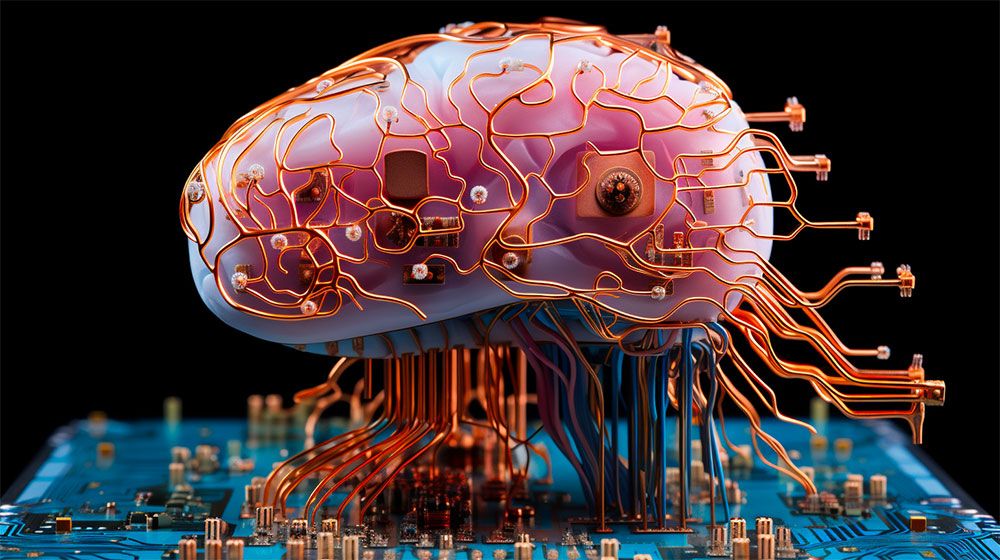Exploring the Frontiers of Brain-Computer Interface Technology
Imagine a world where you could control your computer using just your thoughts. It sounds like science fiction, but with rapid advancements in Brain-Computer Interface (BCI) technology, this vision is becoming a reality. Join us as we dive into the fascinating world of BCI and discover how it's reshaping the future.

What is Brain-Computer Interface (BCI)?
Brain-Computer Interface technology allows direct communication between the brain and external devices. By converting brain signals into commands, BCIs enable users to control computers, prosthetic limbs, and even video games with their minds. This technology has the potential to revolutionize fields such as healthcare, gaming, and communication.
How Does BCI Technology Work?
BCI systems capture brain activity using various methods, such as Electroencephalography (EEG) or functional Magnetic Resonance Imaging (fMRI). These signals are then processed and translated into machine-readable commands. Here's a simplified step-by-step breakdown:
- Signal Acquisition: Sensors capture brain activity.
- Signal Processing: The acquired signals are filtered and amplified.
- Feature Extraction: Relevant information is extracted from the processed signals.
- Classification: Machine learning algorithms classify the extracted features.
- Control Signal: The classified signals are translated into commands for external devices.
For those interested in diving deeper, you can refer to this comprehensive guide on Brain-Computer Interfaces.
Setting Up a Simple BCI Using OpenBCI
If you’re eager to start experimenting, you can use OpenBCI, a popular open-source BCI platform. Here's a quick guide on getting started with OpenBCI on Windows, macOS, and Linux:
Windows
1. Download and install the OpenBCI GUI from the official website.
2. Connect your OpenBCI board to your computer using a USB cable.
3. Launch the OpenBCI GUI and select the appropriate COM port.
4. Start visualizing and recording EEG data.
macOS
1. Download the OpenBCI GUI for macOS from the official site.
2. Unzip the downloaded file and move the OpenBCI app to the Applications folder.
3. Connect your OpenBCI board to your Mac via USB.
4. Open the OpenBCI app and select the correct serial port.
5. Begin exploring EEG data acquisition.
Linux
1. Ensure you have Java installed: sudo apt-get install openjdk-8-jre
2. Download the OpenBCI GUI for Linux from the official site.
3. Unzip the file and navigate to the OpenBCI_Gui directory.
4. Connect your OpenBCI board to your Linux machine via USB.
5. Launch the GUI: ./OpenBCI_GUI
6. Pick the correct serial port and start collecting data.
Applications in Healthcare
One of the most promising applications of BCI technology is in healthcare. BCIs can help individuals with physical disabilities regain control over their environment. For instance, patients with amyotrophic lateral sclerosis (ALS) can communicate using BCI-powered speech devices. Additionally, BCIs can aid in neurorehabilitation by enabling stroke survivors to restore motor functions.
BCI in Gaming and Entertainment
Imagine playing your favorite video game with just your thoughts! BCI technology is making this possible, creating more immersive and interactive gaming experiences. In 2020, researchers developed a mind-controlled version of "Pong," where players use brain signals to move paddles. The future of gaming is set to be more thrilling than ever with BCIs pushing the boundaries.
Challenges and Ethical Considerations
While BCI technology offers incredible possibilities, it also comes with its set of challenges and ethical considerations:
- Data Privacy: Brain data is highly sensitive and requires robust measures to ensure privacy and security.
- Safety: Long-term use of BCI devices needs thorough research to understand potential health risks.
- Ethics: Ethical guidelines are essential to prevent misuse, such as unauthorized mind-reading or surveillance.
It's crucial to address these concerns to ensure the responsible development and deployment of BCI technology.
The Future of BCI: Opportunities and Innovations
As technology advances, we can expect to see even more innovative applications of BCI. From enhancing cognitive abilities to creating seamless human-machine interfaces, the potential is vast. Researchers are exploring the integration of BCIs with Artificial Intelligence (AI) to create adaptive systems that can learn and respond to individual users' needs.
Moreover, ongoing efforts to miniaturize BCI hardware and improve signal accuracy will make these devices more accessible and user-friendly. Imagine a future where you can control not just your computer but also smart home devices, vehicles, and more with the power of your mind.
Getting Started and Contributing to BCI Research
If you're excited about BCI technology and want to contribute to its development, here are a few ways to get started:
- Learn the Basics: Gain foundational knowledge through online courses, books, and research papers.
- Experiment with Open-Source BCI Kits: Platforms like OpenBCI offer accessible tools for hands-on experimentation.
- Join the Community: Participate in forums, attend conferences, and collaborate with researchers and enthusiasts in the field.
- Contribute to Open-Source Projects: Share your findings and improvements with the wider community through GitHub and other platforms.
Conclusion
Brain-Computer Interface technology is not just a glimpse into the future; it's a tangible and rapidly evolving field with immense potential. From healthcare to entertainment, BCIs are poised to transform various aspects of our lives. While challenges remain, the ongoing advancements in this field are nothing short of thrilling.
So, why not start exploring the frontiers of BCI technology today? Who knows, you might just be the next pioneer in this exciting journey. And remember, the only limit is the one you set in your mind—literally!
And on a lighter note, ever wondered if your computer could read your mind? With BCIs, you might soon find it saying, “I know what you're thinking about… it's time for a coffee break!”
